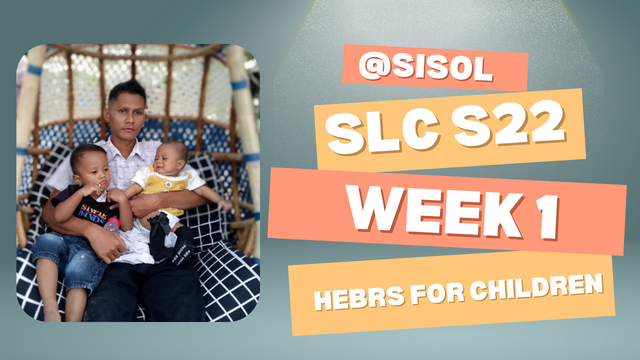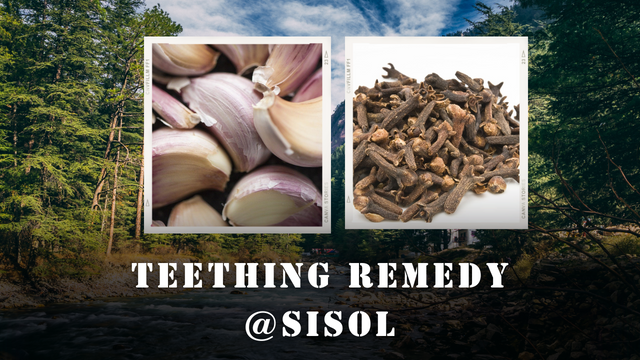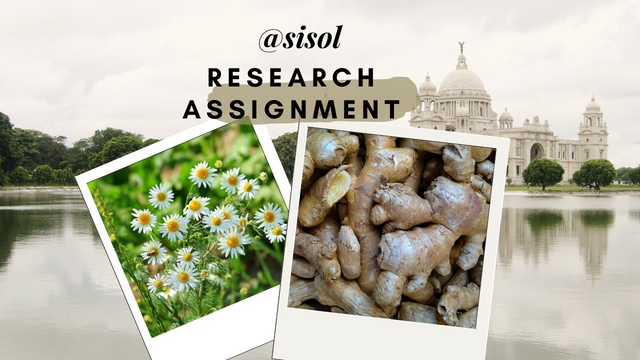SLC S22 Week 1 - Hebrs for children
Hello everyone. Today I am back to participate in the contest SLC S22 Week 1 - Herbs for children. I invite @assidiq @furqanarr @muzack1 @teukuipul87 to participate in this contest.

Children's teeth are quite sensitive, so lack of dental hygiene, frequent biting of hard objects, or mistakes in brushing teeth can erode the protective layer. As a result, children will feel pain in their teeth when consuming certain foods.
This traditional method has powerful results. You don't need to bother preparing the ingredients, just a glass of warm water. Let your little one gargle for a while, and wait for the benefits immediately. If needed, you can add salt for maximum results.
Clove oil has a content that can cause a numbing effect on sore teeth and gums. Well, you can pour a little clove oil onto cotton, then stick or slip it on the sore tooth. Clove oil acts as a local anesthetic so that the pain subsides and then disappears.

It is not uncommon for cheeks to become swollen because the gums are having problems when the teeth hurt. If this happens, you can try to compress your little one's cheeks with cold water or ice water. Some people also try to wrap ice cubes and apply them to the cheeks. You can try the one that suits and likes your child the most.
Easily available at home, garlic has an essence that can relieve toothache. You only need to crush the garlic and then place it on the aching tooth. Wait until the pain is gone.
1. Chamomile (Chamomile Flower)
- Health Benefits:
- Helps relieve digestive disorders, such as bloating, upset stomach, or nausea.
- Has a calming effect so it can help children who have difficulty sleeping or experience mild anxiety.
- Reduces inflammation, such as sore throat or skin irritation when used topically.
- How to Use:
- Can be given in the form of weak chamomile tea. Make sure the temperature is safe enough before drinking.
- For infants or young children, consult a doctor for dosage, especially to avoid allergies (especially in children with a history of allergies to plants in the Asteraceae family).
2. Ginger
- Health Benefits:
- Helps relieve nausea and vomiting, including those caused by motion sickness.
- Improves digestion and helps reduce bloating.
- Has anti-inflammatory properties that can help reduce mild pain or aches.
- How to Use:
- Can be boiled into warm ginger tea with a little honey (for children over 1 year old).
- Ginger can also be added to food as a spice.
3. Pure Honey (As Herbal Medicine)
- Health Benefits:
- Helps relieve coughs naturally.
- Supports healing of minor wounds and irritations when used topically.
- Contains antimicrobial properties that help boost immunity.
- How to Use:
- Give honey as a mixture in herbal tea or warm water for children over 1 year old (not recommended for infants under 1 year old due to the risk of botulism).
- Apply a thin layer to minor wounds to speed healing.

Important Notes:
- Before using herbs on children, always consult a doctor or herbalist to ensure safety and appropriate dosage.
- Pay attention to allergic reactions or side effects that may arise.
- Make sure the herbs used come from a trusted source and are free from contaminants.
Herbal Remedy Recipe
Ingredients:
- Fennel Seeds - 1 teaspoon
(Helps improve urinary tract health and kidney function). - Gotu Kola Leaves (Centella asiatica) - 5 leaves
(Known to calm nerves and improve blood circulation). - Pure Honey - 1 teaspoon
(Helps calm and improve children's sleep quality). - Clean Water - 250 ml
Making Steps:
- Wash the fennel seeds and gotu kola leaves thoroughly to ensure there is no dirt or contamination.
- Boil water in a saucepan until boiling.
- Put the fennel seeds and gotu kola leaves into the boiling water.
- Let it boil on low heat for 5-7 minutes until the water reduces slightly.
- Turn off the heat, then strain the decoction into a glass using a fine sieve.
- Add 1 teaspoon of honey to the glass and stir until dissolved.
- Wait until warm before giving to the child.
How to Use:
- Give this concoction 1 time a day, ideally 1-2 hours before bedtime.
- Use for 1 week in a row to see the results.
Observation:
- Day 1 to 3:
- Observe whether the child begins to have better control over the urge to urinate at night.
- Note the frequency of bedwetting and whether there is a decrease.
- Day 4 to 7:
- Evaluate the quality of the child's sleep. This concoction also helps calm the nervous system so that sleep is more restful.
- Note if there is a change in bedwetting habits.
- After 7 Days:
- If the frequency of bedwetting decreases or stops, continue using for a few days to make sure the bedwetting habit is completely gone.
- If there is no change, consult a doctor or herbalist for further solutions.
Important Notes:
- Make sure your child urinates before going to bed as an additional step.
- Consult a doctor before giving the concoction if your child has allergies or certain medical conditions.
- Maintain your child's sleep pattern and avoid giving excessive drinks at night.
Hopefully this concoction helps overcome your child's bedwetting problem!
Regards @sisol